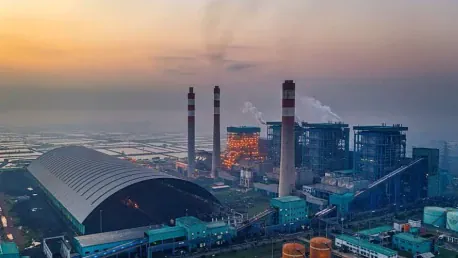In an ambitious bid to become coal-free by 2030, Xcel Energy has put forward a detailed proposal to replace its last coal plants in Colorado primarily with renewable energy sources, signaling a significant move towards reducing greenhouse gas emissions.
Replacement Proposal
Xcel Energy’s proposal focuses on replacing the power generated by the Comanche 3 coal plant in Pueblo and the Hayden coal plant in Routt County. The plan primarily includes adding 7,200 megawatts of new wind power, 3,000 megawatts of new solar power, and battery storage systems. Some versions of the proposal also suggest using 1,600 megawatts from natural gas, although two configurations opt out of natural gas entirely, relying more on energy storage technologies.
Timeline and Commitments
The timeline set by Xcel Energy outlines the Hayden coal plant closing in 2028, while the Comanche 3 plant will reduce operations in 2025 before shutting down completely by the end of 2030. This transition aligns with Xcel’s commitment to reducing emissions by 80% from 2005 levels by 2030.
Operational Challenges
The Comanche 3 plant has faced numerous operational challenges over the years, averaging 91.5 days per year of outages over the past decade. In 2020, the plant was mostly out of commission, prompting increased pressure for an earlier shutdown than originally planned.
Community and Environmental Perspectives
The proposal has sparked a range of reactions from different stakeholders. Environmentalists and local residents, such as Pueblo resident Jamie Valdez, are pushing for the exclusive use of renewable energy to replace coal. They argue against the inclusion of natural gas, asserting that it does not align with the community’s demands for cleaner energy and healthier living conditions. On the other hand, a committee of Pueblo community members had earlier recommended replacing the coal plant with a gas-fired plant or small modular nuclear units, citing potential job creation and increased tax revenue as benefits.
Utility Commission’s Role
The Colorado Public Utilities Commission (PUC) will need to review and determine the outcome of Xcel Energy’s proposal. This extensive review process, which is expected to conclude by 2026, will assess both the overarching proposal and the specific energy projects to be implemented.
Future Energy Demand
Xcel Energy anticipates a significant increase in electricity demand, driven by heightened building and transportation electrification and the development of new data centers in the state. The company projects an annual growth rate of 4% from 2023 through 2031, in contrast to the 0.7% growth rate observed over the past five years.
Potential for Nuclear Power
Xcel Energy is also considering the inclusion of nuclear power to meet future energy needs. However, small modular reactor technology is still being developed and might not be readily commercialized in time for the initial bidding process for new energy projects.
Support for Employees and Communities
In an ambitious and forward-thinking move, Xcel Energy has laid out a comprehensive plan to transition away from coal entirely by the year 2030. Central to this proposal is the strategic replacement of its last remaining coal plants in Colorado with primarily renewable energy sources. This significant shift underscores Xcel Energy’s commitment to drastically reducing greenhouse gas emissions and tackling climate change. The initiative is part of a broader effort aimed at embracing sustainability and cleaner energy. By phasing out coal, Xcel Energy aims to harness the power of wind, solar, and other renewable resources, thus setting a powerful example for the energy industry. This plan is not just a move towards a greener environmental footprint but also a step towards ensuring a more sustainable and responsible energy infrastructure. The ambitious proposal reflects a growing trend among energy companies to prioritize environmental impacts and aligns with global efforts to combat the adverse effects of climate change through innovation and conscientious energy management.









